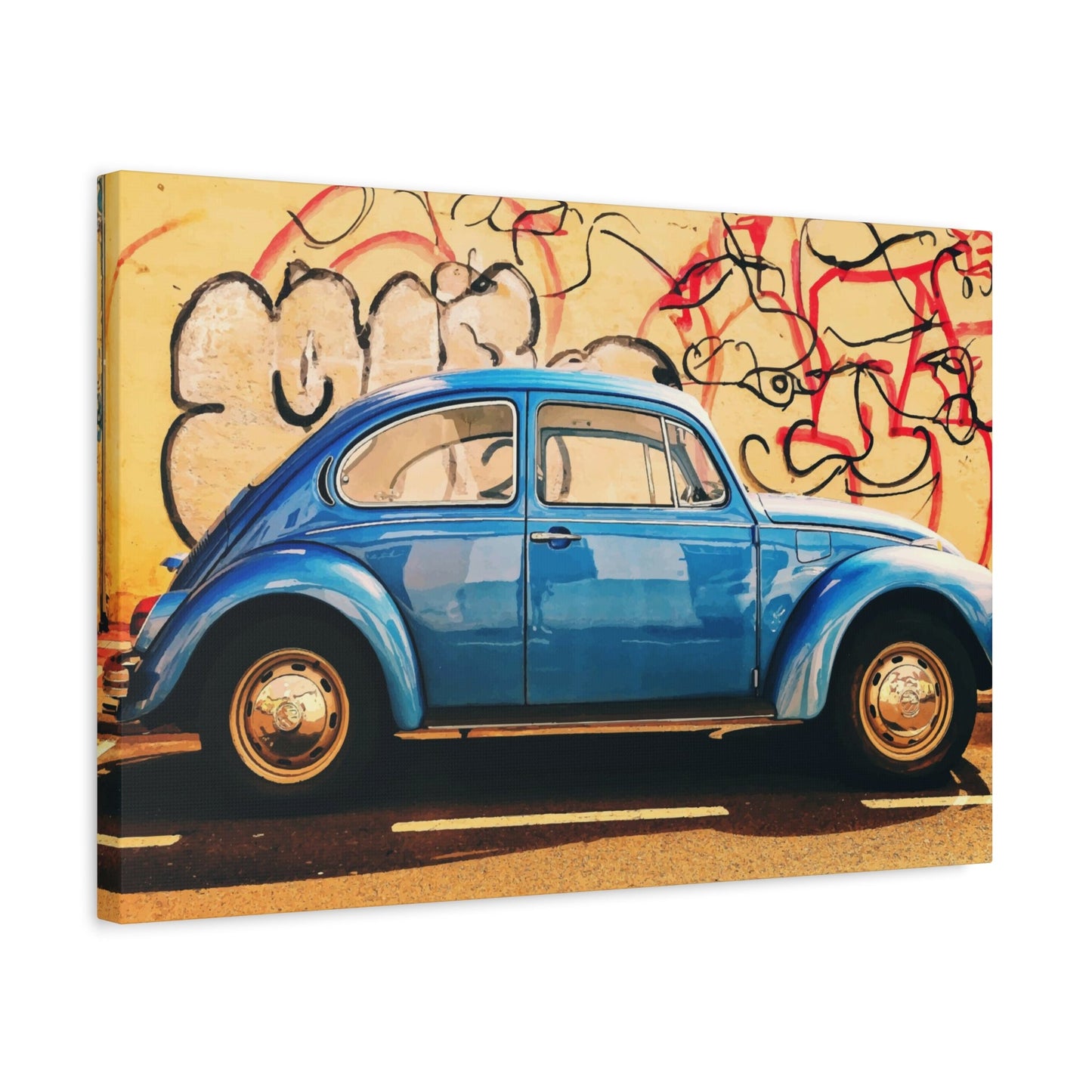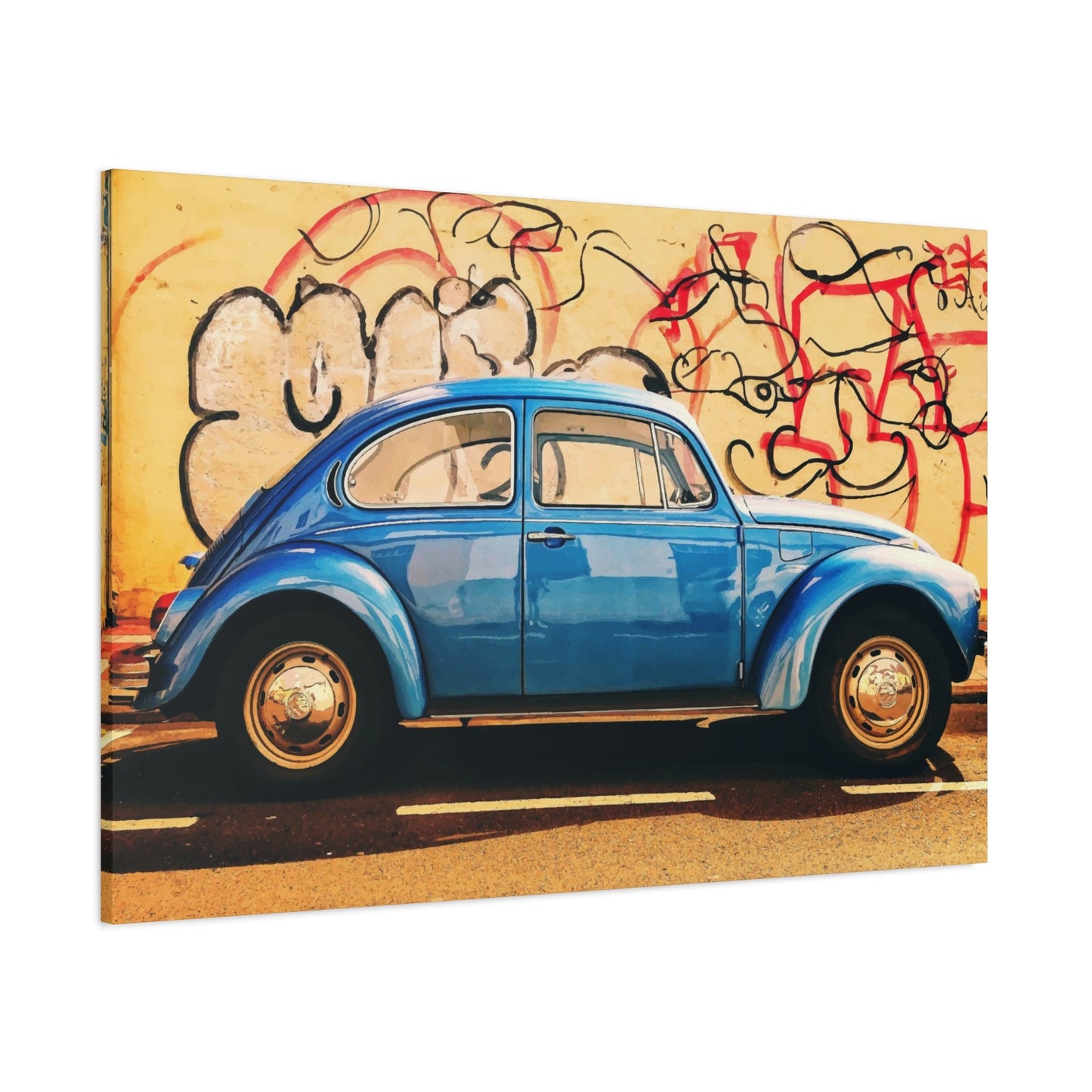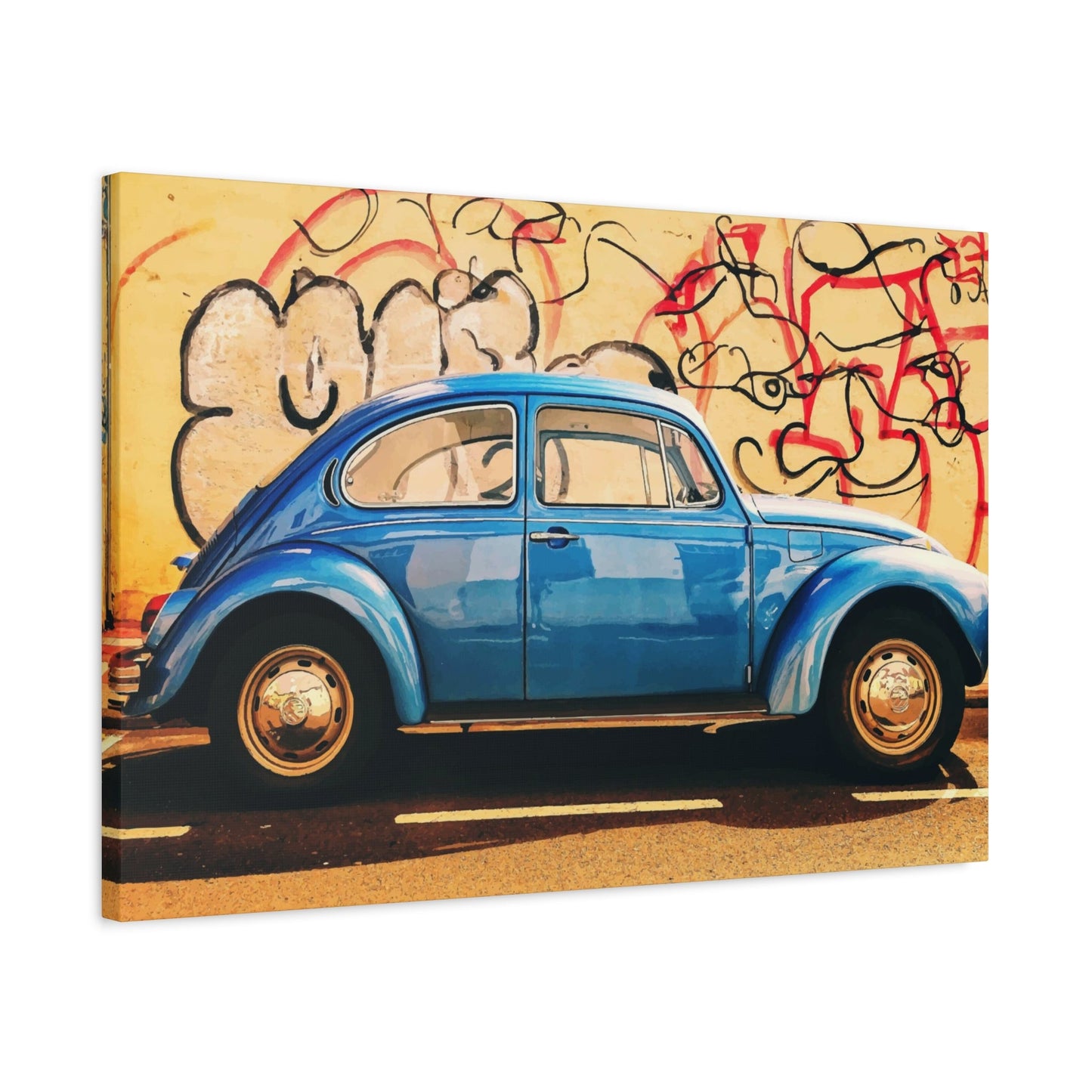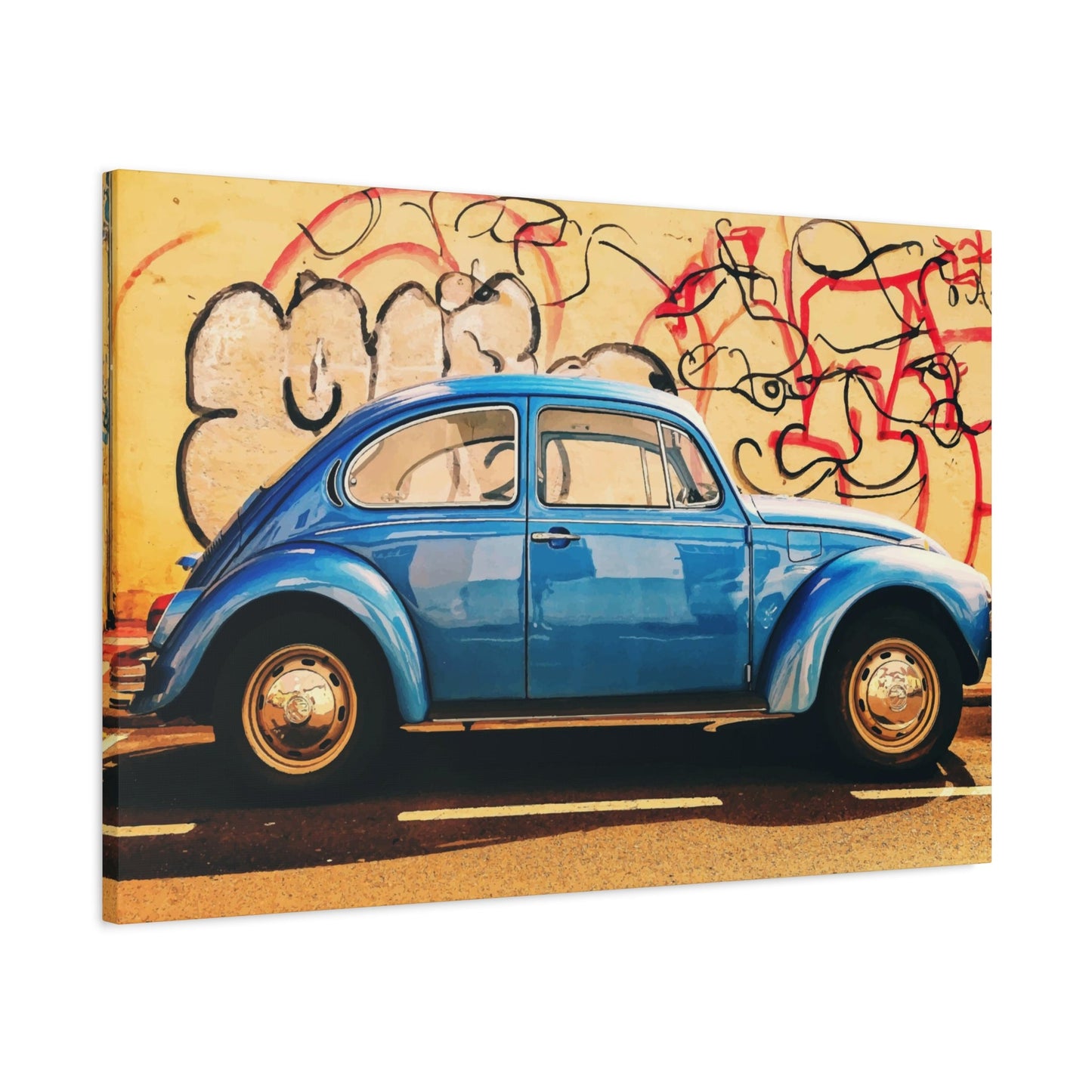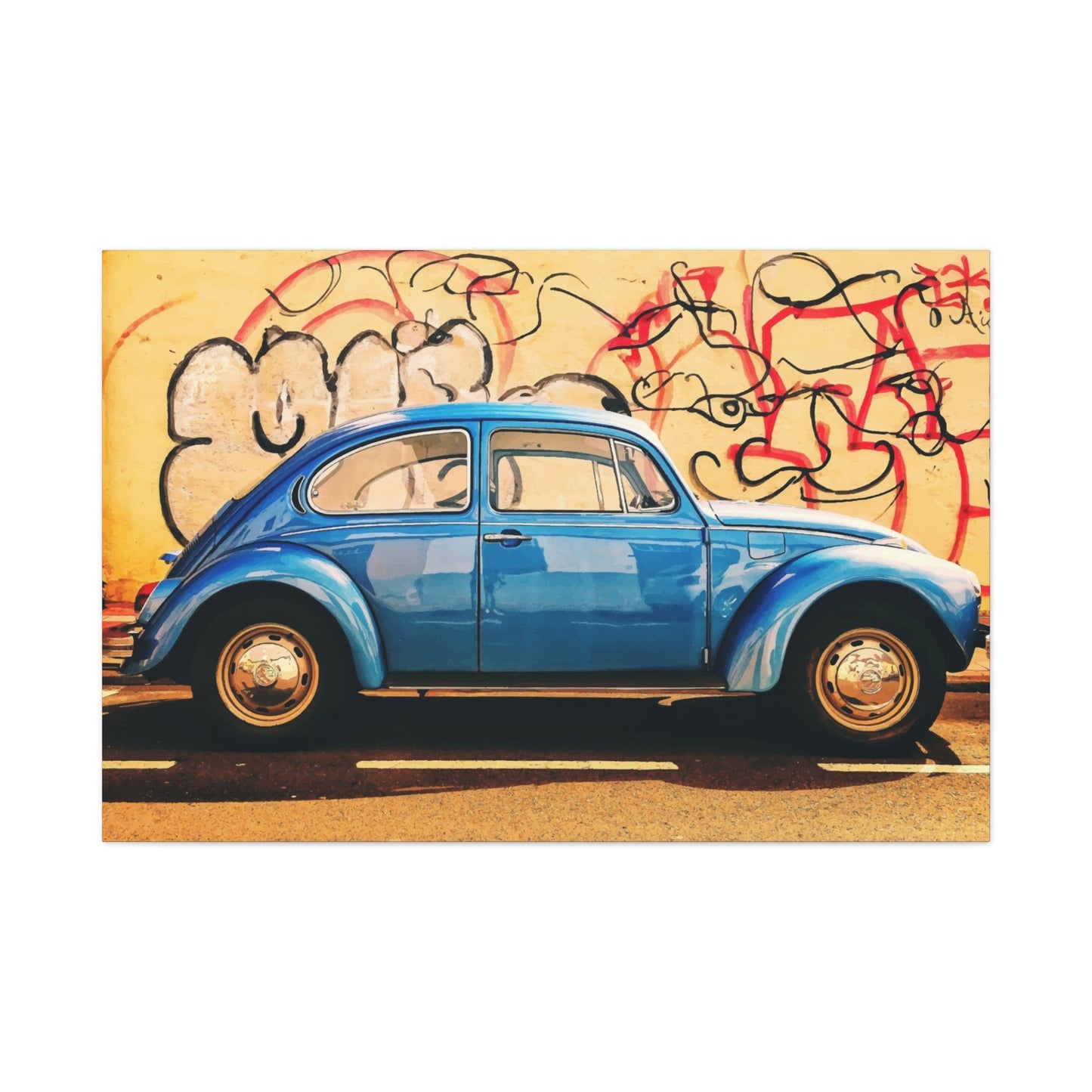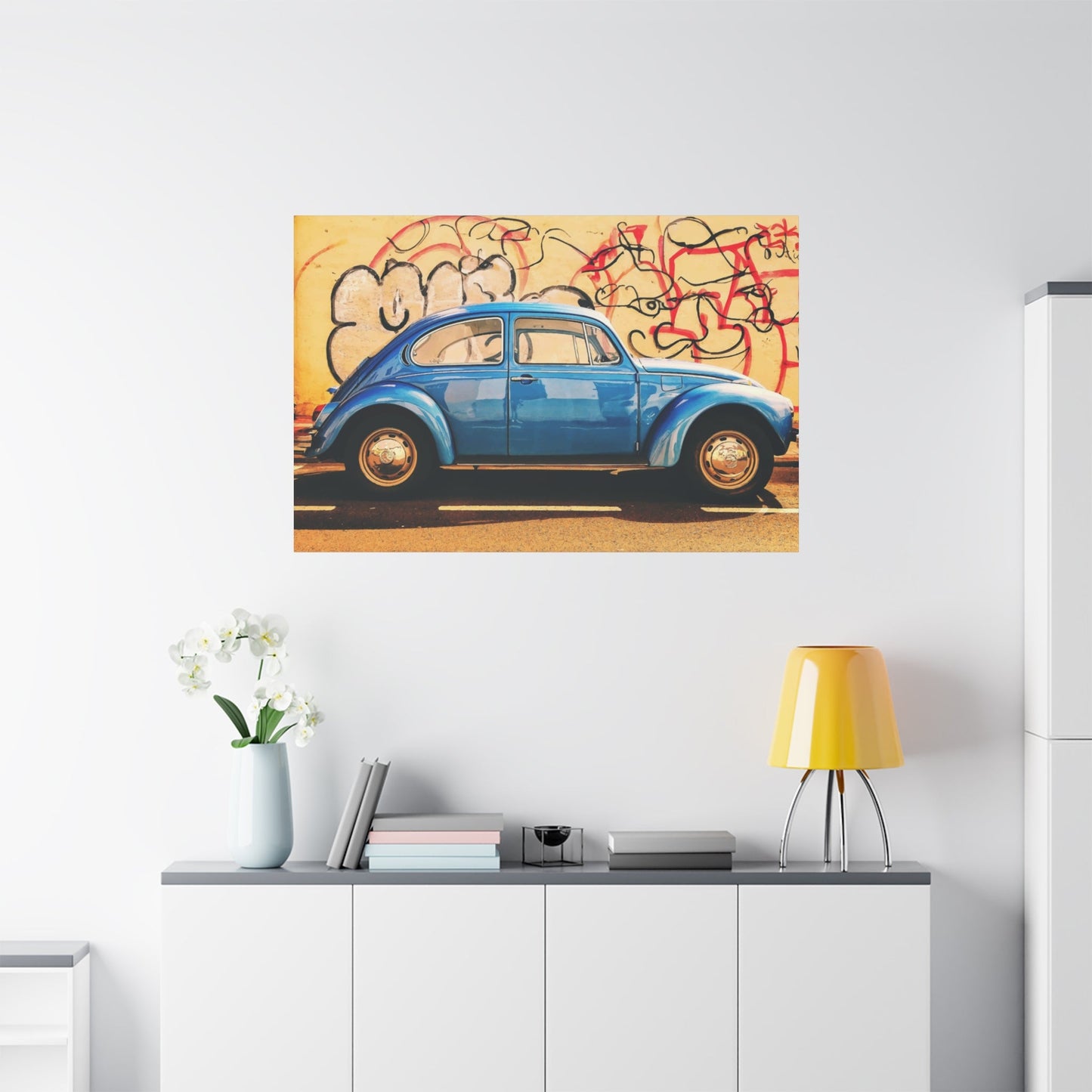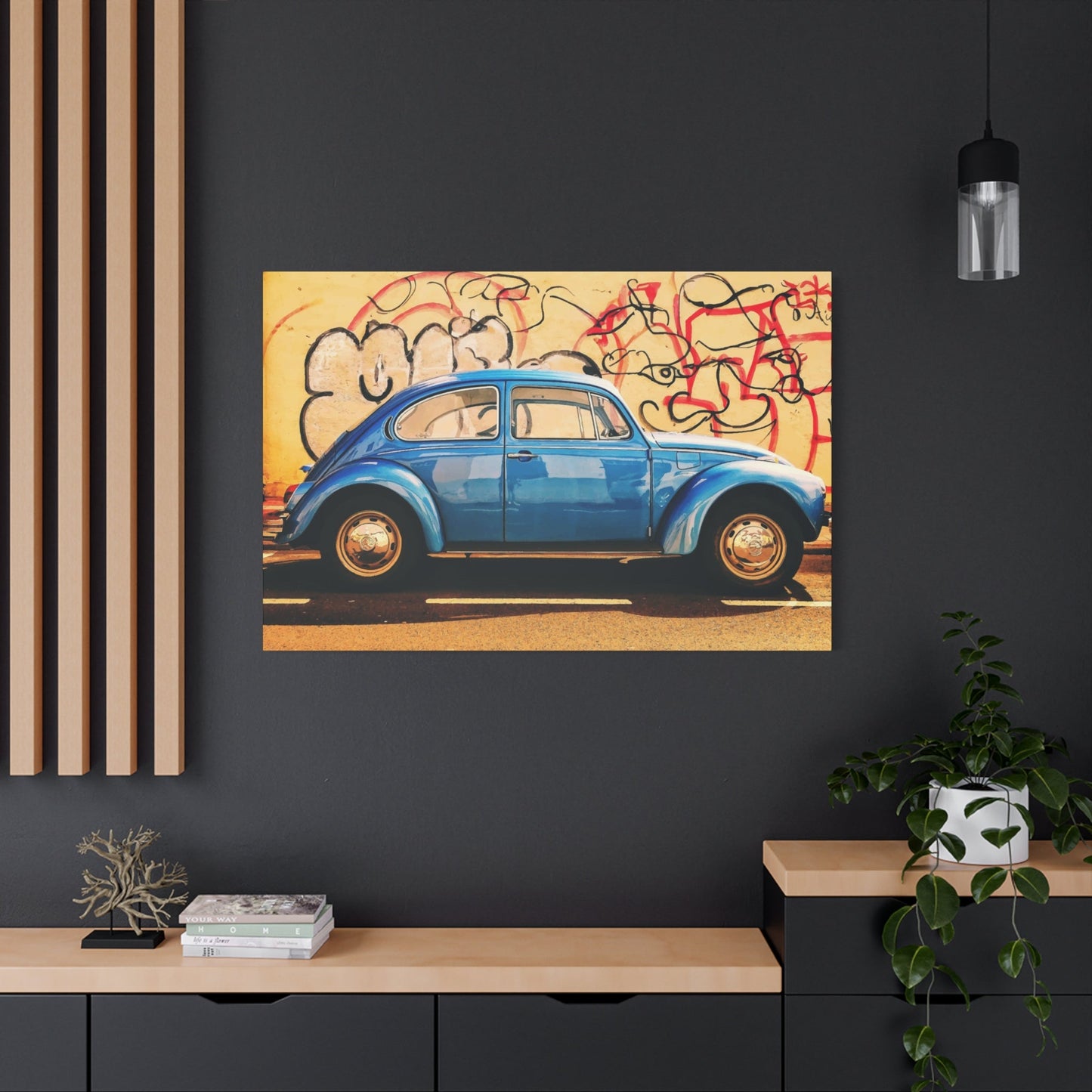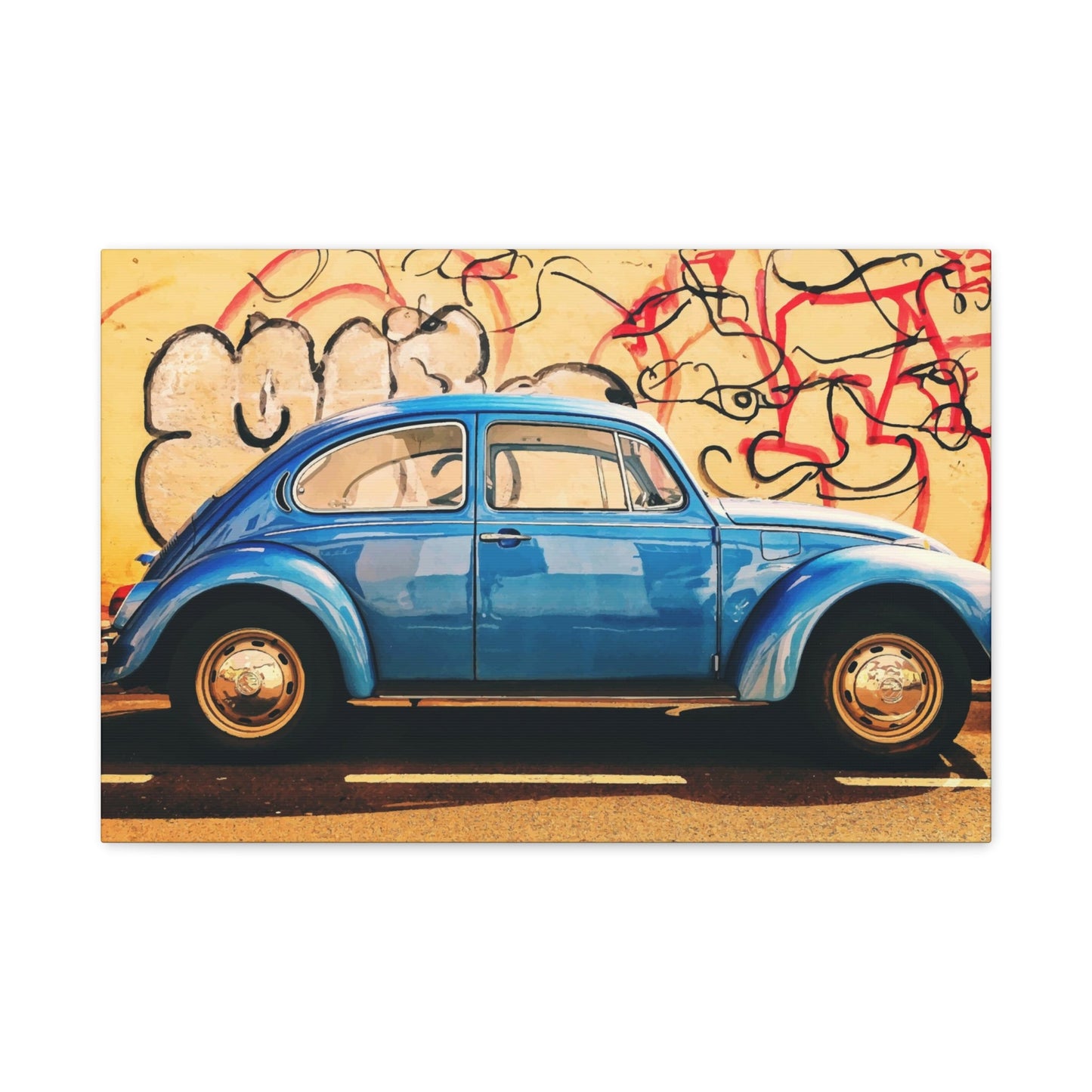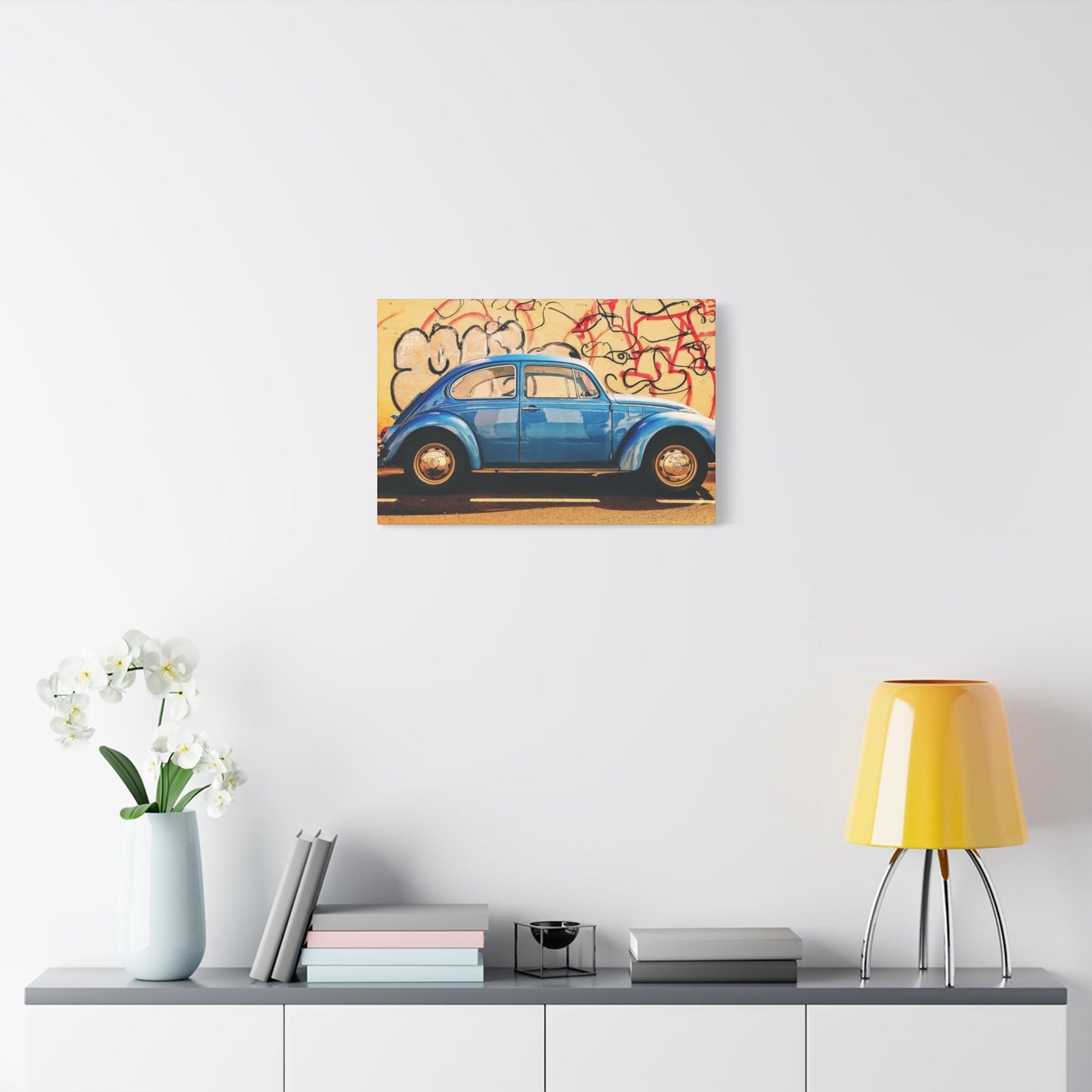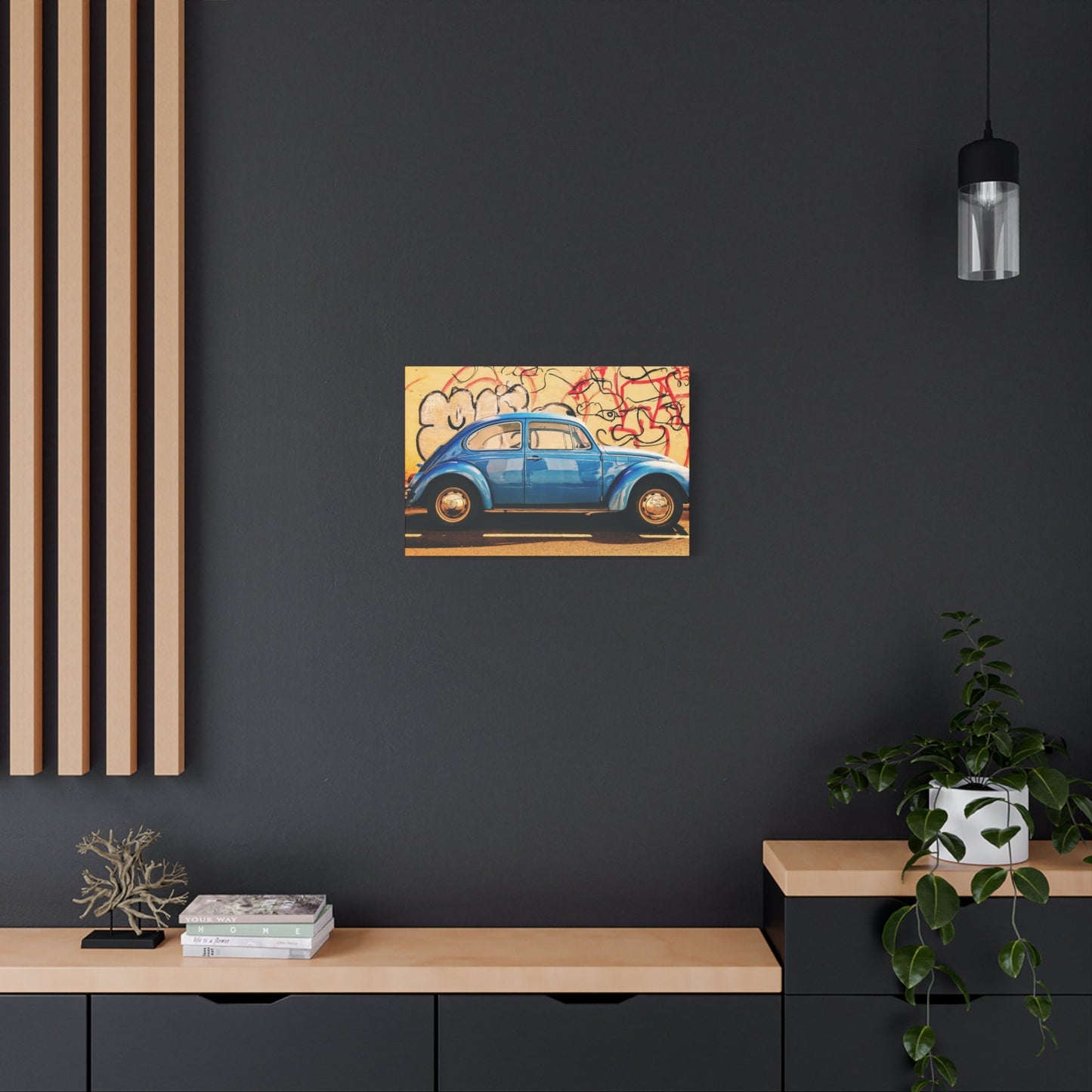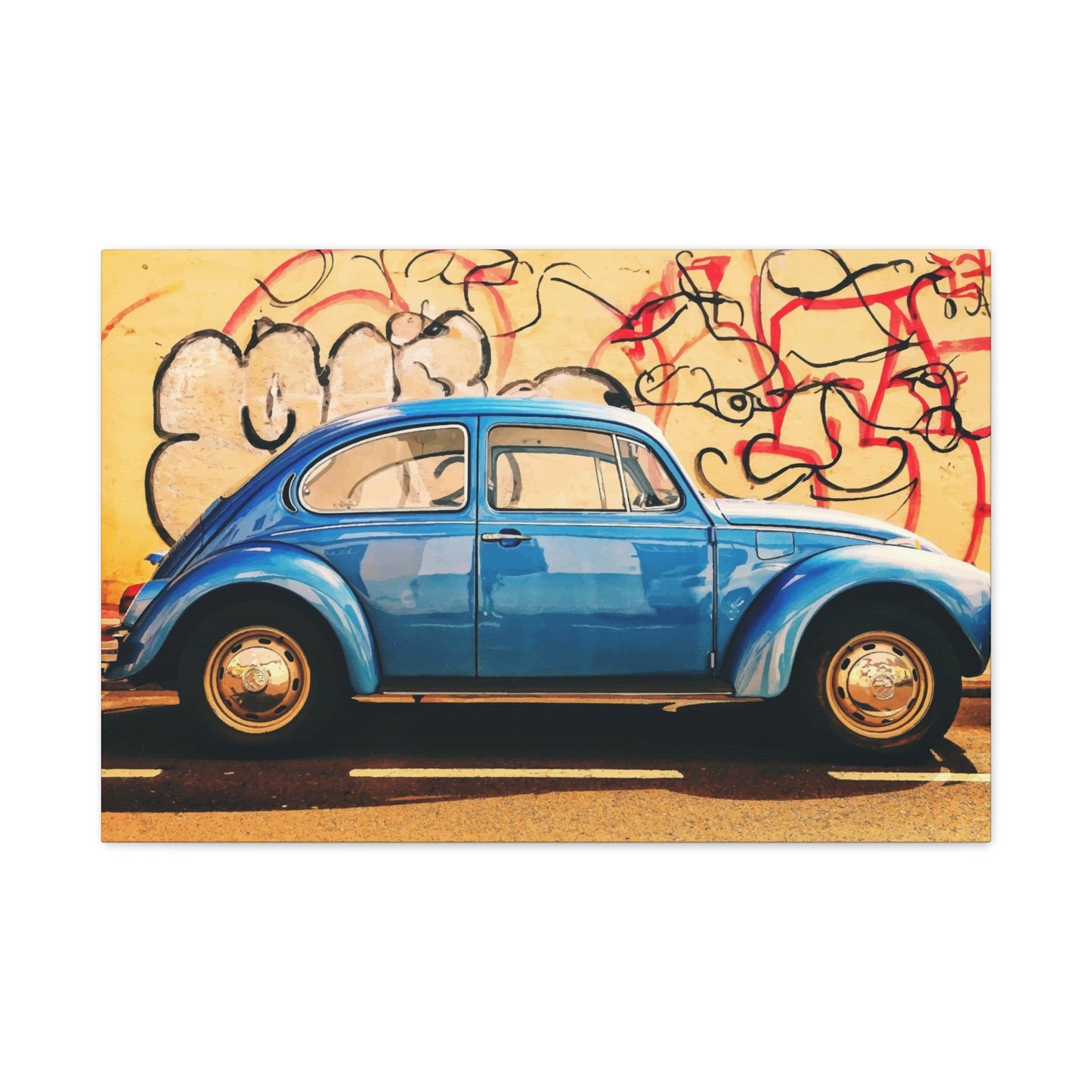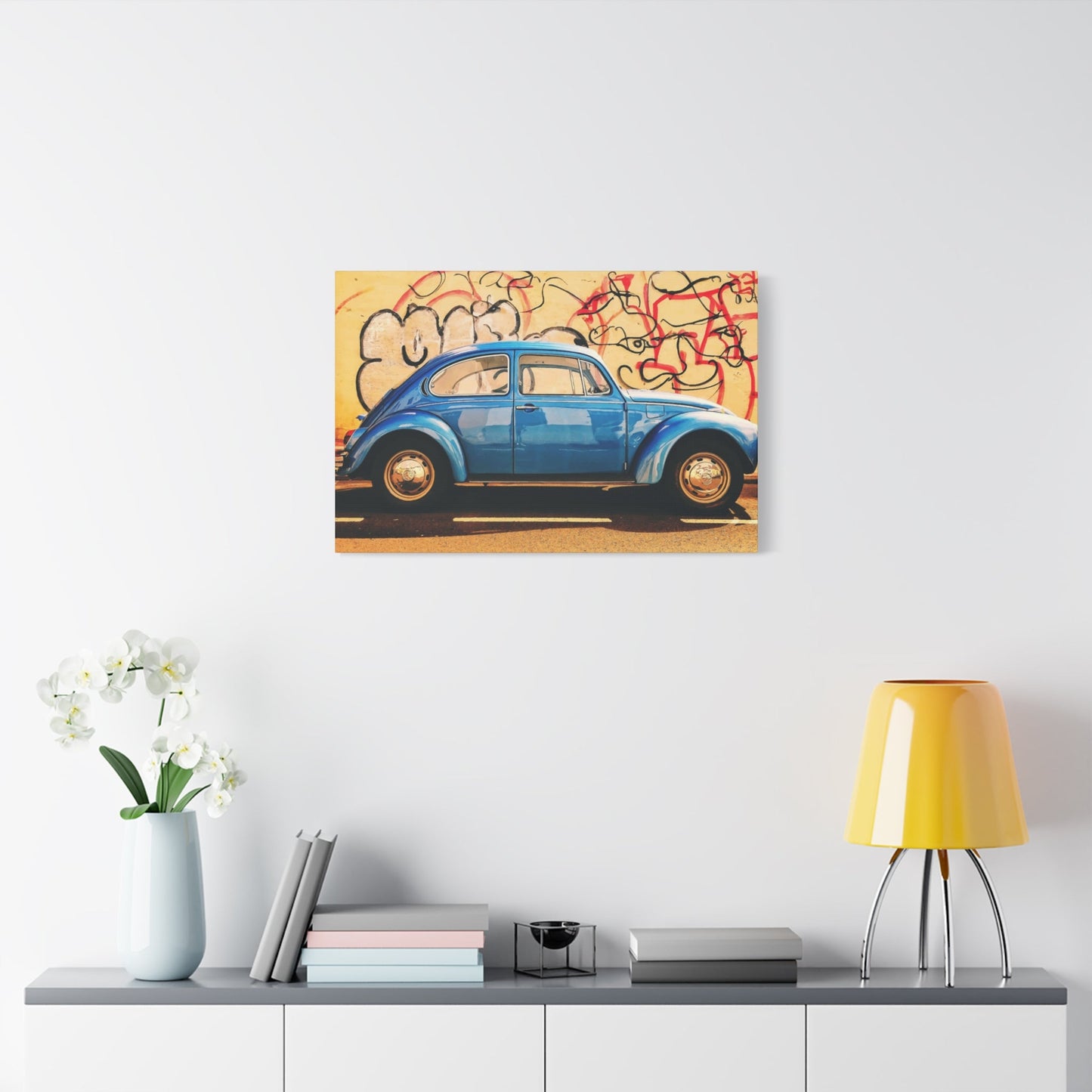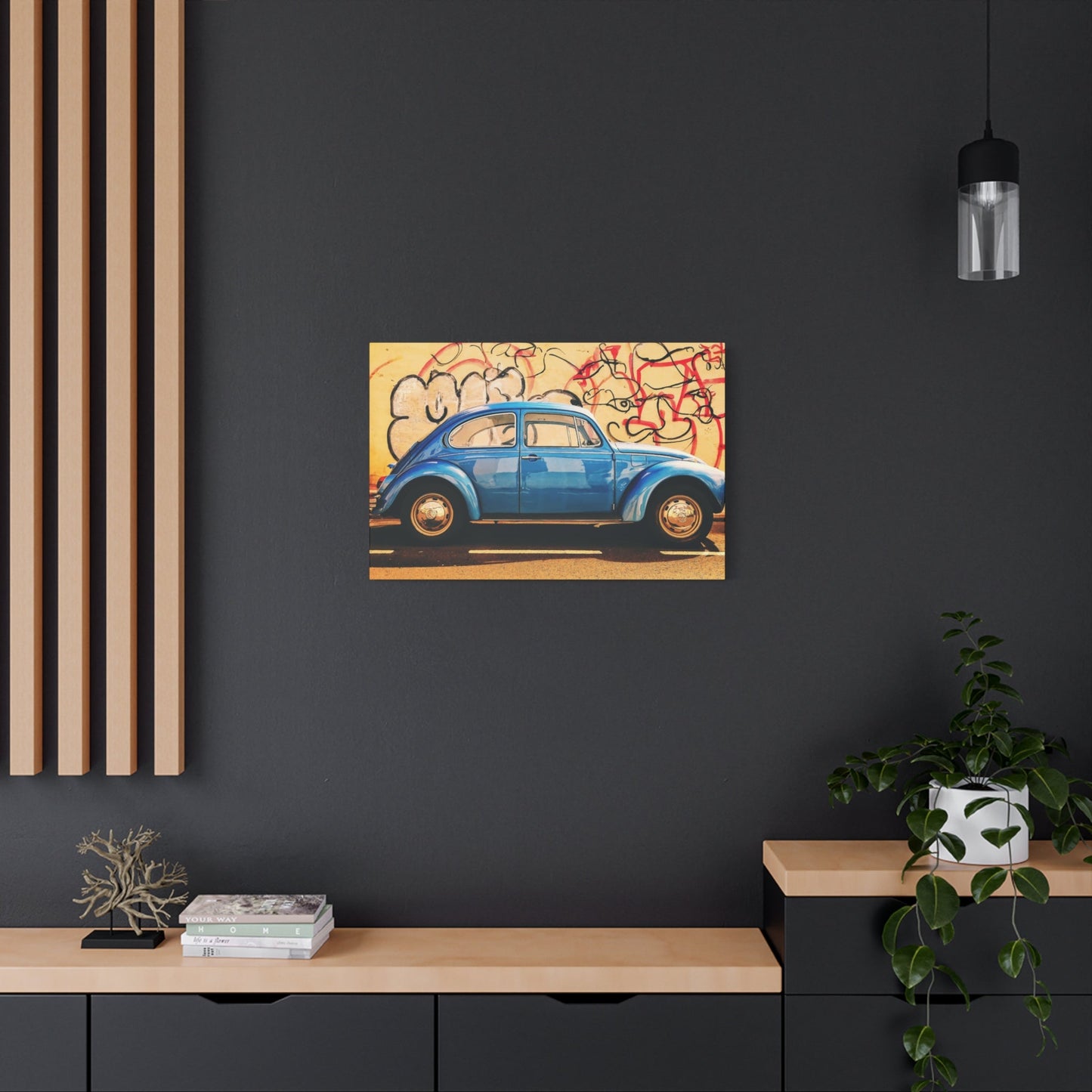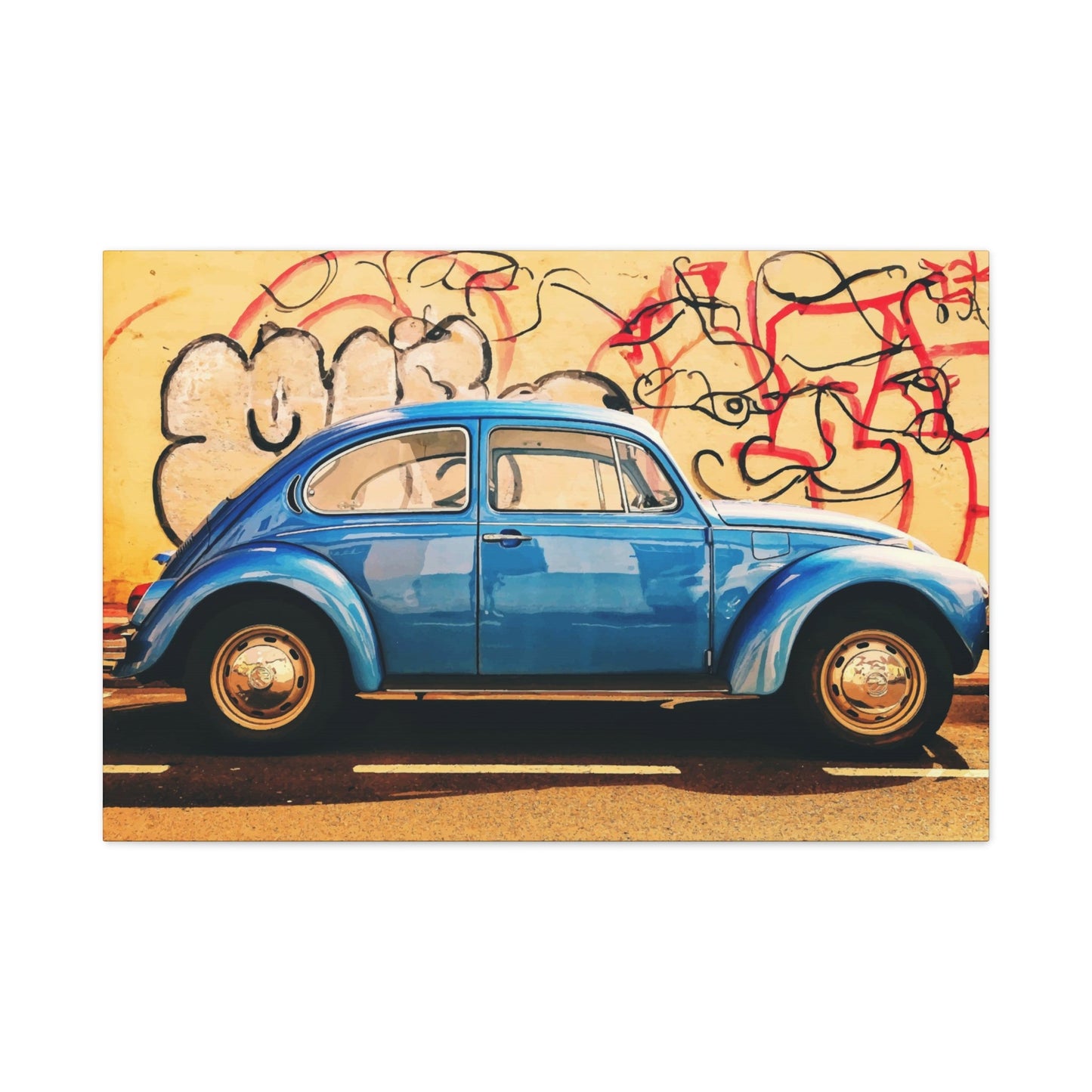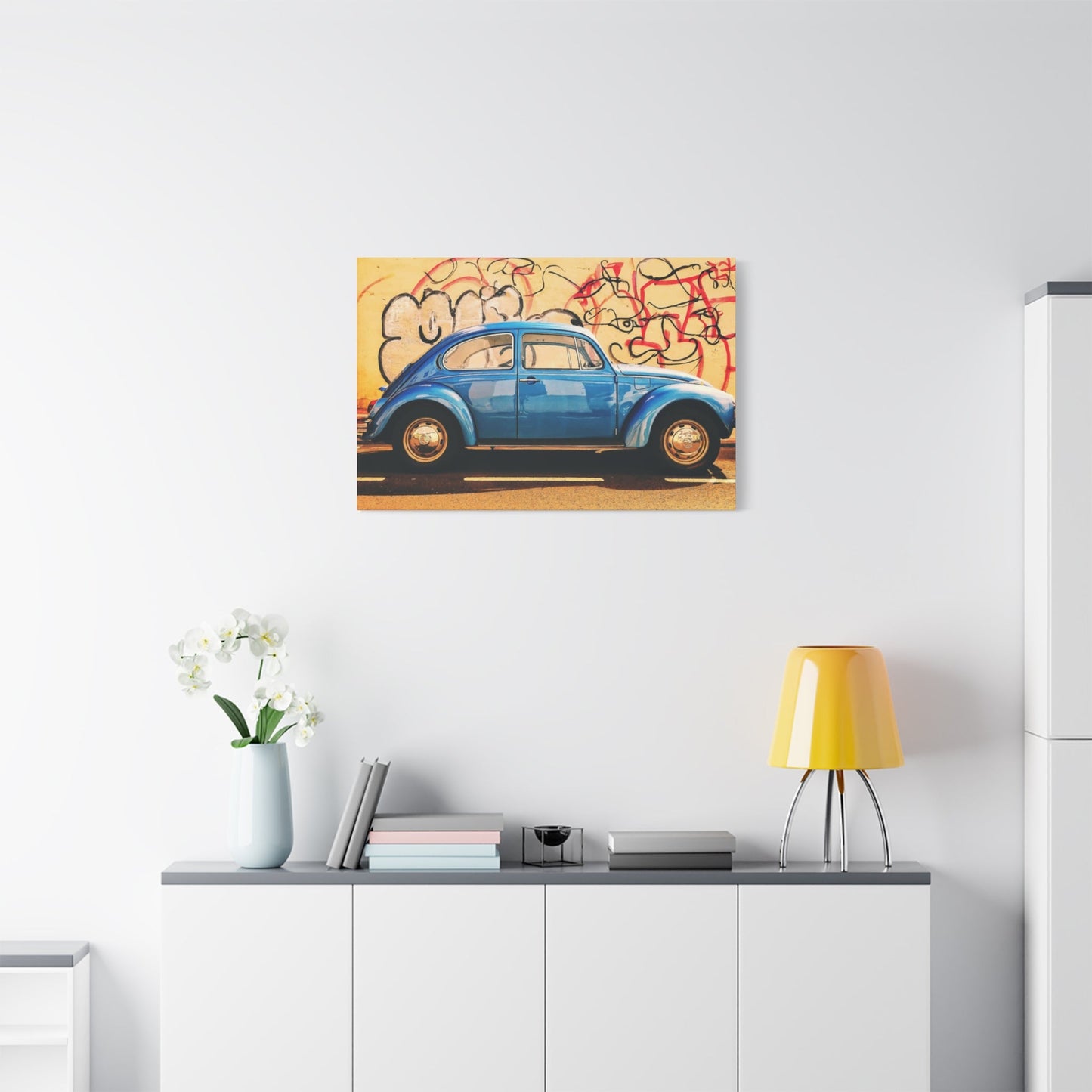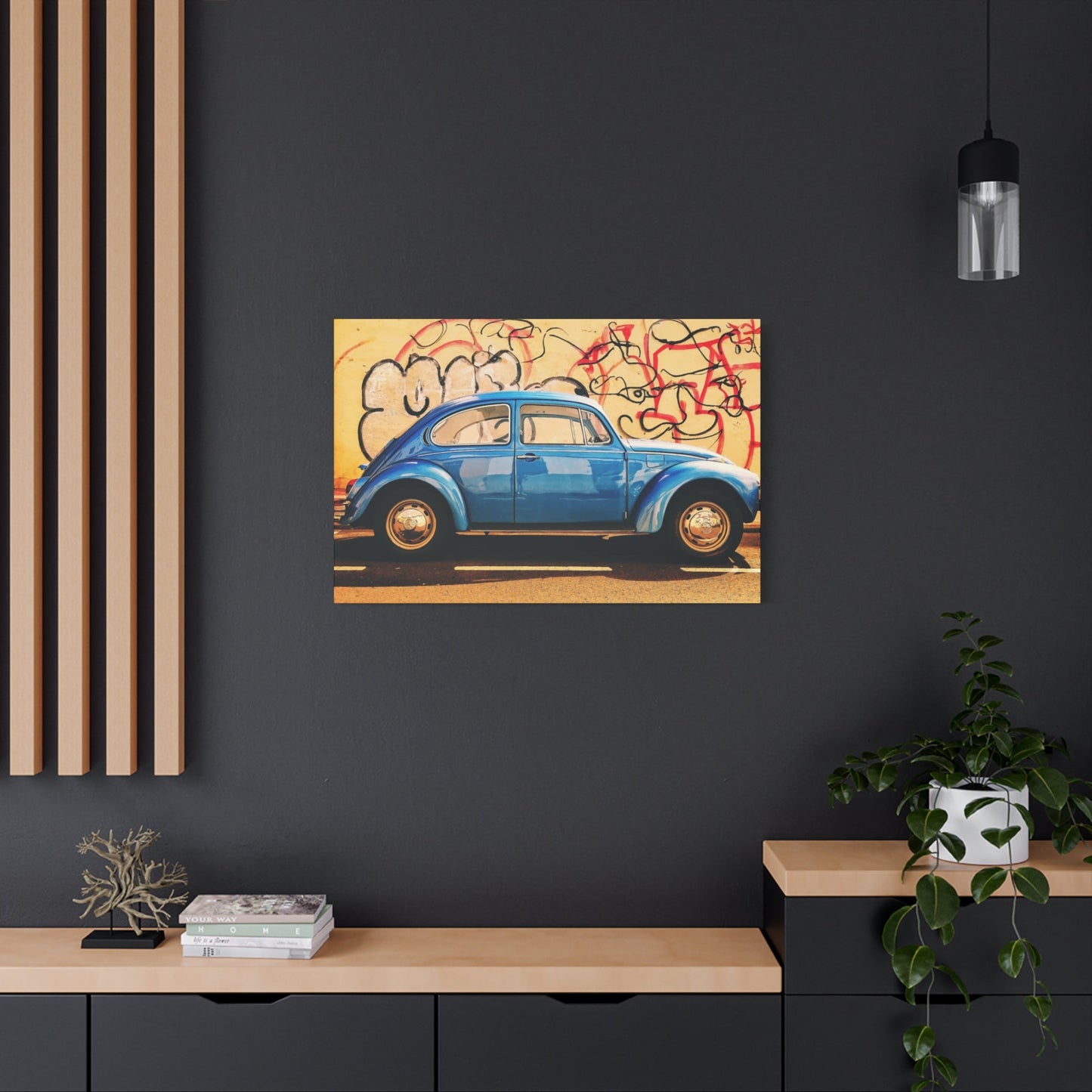Understanding the History Behind Popular Retro Wall Art Themes
Retro wall art continues to captivate homeowners and decorating enthusiasts with its distinctive ability to transport viewers back to beloved eras while maintaining contemporary relevance. This enduring fascination stems from the unique emotional connection these pieces create, bridging the gap between past and present through carefully curated visual elements that speak to universal themes of nostalgia, creativity, and cultural memory.
The phenomenon of retro aesthetics in home decoration represents more than mere trend-following; it reflects a deeper human desire to connect with simpler times and celebrate the artistic innovations of previous decades. These artworks serve as conversation starters, memory triggers, and stylistic anchors that can transform any room from mundane to memorable. Whether featuring bold geometric patterns reminiscent of the 1960s, warm earth tones from the 1970s, or neon-bright palettes from the 1980s, retro pieces offer infinite possibilities for personal expression.
What makes retro wall art particularly appealing is its versatility in complementing various decorating philosophies. Unlike strictly period-specific pieces that might feel constraining, retro artwork adapts beautifully to contemporary settings while maintaining its distinctive character. This adaptability allows homeowners to incorporate elements of their favorite historical periods without committing to complete period authenticity, creating personalized environments that feel both nostalgic and current.
The psychological impact of retro artwork cannot be understated. These pieces often evoke feelings of comfort, joy, and optimism associated with perceived simpler times. The bold colors, playful patterns, and iconic imagery characteristic of retro design can instantly lift spirits and create positive energy within any room. This emotional resonance makes retro wall art particularly effective in creating welcoming, personality-filled environments that guests remember long after visiting.
Furthermore, retro wall art represents an accessible entry point into art collecting for many people. Unlike contemporary fine art, which can feel intimidating or expensive, retro pieces often carry associations with popular culture, making them more approachable and relatable. This accessibility has contributed to the widespread adoption of retro aesthetics across diverse demographic groups and income levels.
Exploring Popular Retro Styles for Contemporary Home Decor
The landscape of retro home decoration encompasses numerous distinct styles, each carrying unique characteristics that reflect the cultural zeitgeist of their respective eras. Understanding these different approaches enables homeowners to make informed decisions about which retro elements best complement their existing decor and personal preferences.
Mid-century modern represents perhaps the most enduring and widely adopted retro style in contemporary home decoration. Characterized by clean lines, organic shapes, and a harmonious blend of natural and artificial materials, this aesthetic emerged from the post-World War II optimism of the 1940s and 1950s. Wall art from this period often features abstract geometric compositions, atomic-age motifs, and nature-inspired patterns rendered in sophisticated color palettes of teal, orange, mustard, and deep browns.
The psychedelic movement of the 1960s introduced an entirely different retro aesthetic, celebrating experimentation, rebellion, and consciousness expansion through visual art. This style embraces swirling patterns, kaleidoscopic colors, and optical illusions that challenge perception and create dynamic visual experiences. Modern interpretations of psychedelic retro art maintain the movement's experimental spirit while adapting the intensity for contemporary living environments.
The disco era of the 1970s brought forth another distinctive retro style characterized by glamour, metallics, and bold geometric patterns. This aesthetic celebrates excess and entertainment, featuring mirror balls, chrome accents, and dramatic lighting effects translated into wall art through reflective surfaces, metallic inks, and high-contrast compositions. Contemporary applications of disco-era retro art often focus on the period's sophisticated color combinations and geometric precision rather than its more flamboyant elements.
New Wave and punk aesthetics from the late 1970s and early 1980s introduced edgier retro styles that celebrated individuality and artistic rebellion. These movements produced wall art characterized by torn paper effects, spray paint aesthetics, and bold typography that challenged conventional design rules. Modern interpretations of these styles often soften the original aggression while maintaining the innovative spirit and visual impact.
The Memphis design movement of the 1980s created one of the most recognizable retro styles, featuring bold colors, geometric shapes, and pattern-on-pattern compositions that celebrated postmodern design philosophy. This aesthetic embraces contradiction and playfulness, combining elements that shouldn't work together to create surprisingly harmonious results. Contemporary Memphis-inspired wall art continues to push boundaries while remaining accessible to mainstream audiences.
Mastering the Art of Using Retro Artwork to Create Authentic Vintage Vibes
Creating authentic vintage atmospheres through retro wall art requires understanding the subtle elements that distinguish genuine period authenticity from superficial imitation. The process involves careful attention to color harmony, pattern coordination, and contextual appropriateness that honors the original aesthetic while serving contemporary functional needs.
The foundation of authentic vintage vibes begins with understanding the emotional and cultural context that originally inspired retro artistic movements. Each era's artwork reflected specific social conditions, technological innovations, and cultural values that influenced both subject matter and execution techniques. By appreciating these underlying influences, modern decorators can make more informed choices about which elements to emphasize and how to combine them effectively.
Color selection plays a crucial role in establishing authentic vintage atmospheres. Each retro period featured distinctive color palettes that reflected available pigments, printing technologies, and cultural preferences of their time. The warm oranges, avocado greens, and harvest golds of 1970s decor, for example, cannot be randomly substituted with contemporary color trends without losing the intended vintage effect. Successful vintage vibe creation requires commitment to period-appropriate color relationships, even when adapting them for modern applications.
Texture and material considerations significantly impact the authenticity of vintage-inspired installations. Original retro artwork often featured specific printing techniques, paper types, and mounting methods that contributed to their overall aesthetic impact. Modern reproductions and inspired pieces can maintain this authenticity by incorporating similar textural elements, such as canvas weaves that simulate vintage printing methods or frame styles that complement period aesthetics.
The scale and proportion of retro artwork must align with the architectural features and furniture styles present in contemporary homes. Original retro pieces were designed for the room sizes, ceiling heights, and furniture proportions common during their respective eras. Adapting these works for modern living requires understanding how to scale appropriately while maintaining the visual impact that made the original pieces effective.
Lighting considerations become particularly important when creating vintage vibes with retro wall art. Different eras featured distinct approaches to artificial lighting that significantly influenced how artwork was originally viewed and appreciated. Recreating appropriate lighting conditions, whether through period-appropriate fixtures or careful positioning relative to natural light sources, can dramatically enhance the authenticity of vintage-inspired room designs.
Mastering the Strategic Use of Bright Colors in Retro Print Designs
The bold, vibrant color palettes characteristic of retro print designs require sophisticated understanding of color theory and psychological impact to implement successfully in contemporary home environments. These eye-catching hues, while central to authentic retro aesthetics, can easily overwhelm modern living situations if not carefully balanced with complementary elements and strategic placement considerations.
Understanding color psychology becomes essential when incorporating bright retro colors into home decoration schemes. The optimistic reds, energetic oranges, and electric blues commonly found in retro artwork can significantly influence mood and energy levels within living environments. Strategic placement of these intense colors allows homeowners to harness their positive psychological effects while avoiding visual fatigue or sensory overload that might result from excessive use.
The concept of color anchoring provides a useful framework for incorporating bright retro colors successfully. This approach involves selecting one or two dominant bright colors from a retro piece as the foundation for a room's color scheme, then building supporting palettes around these anchor colors using more subdued tones. This method allows the retro artwork to serve as a focal point while ensuring the overall environment remains livable and comfortable.
Balancing warm and cool tones within retro color schemes prevents visual monotony and creates more sophisticated, dynamic environments. Many successful retro decorating approaches combine the warm oranges and yellows typical of certain periods with cooler blues and greens to create visual tension that maintains interest without becoming overwhelming. This balance mimics the natural color relationships found in successful historical retro designs.
The interaction between bright retro colors and natural lighting throughout daily cycles requires careful consideration during placement decisions. Colors that appear harmonious under morning light may clash dramatically under afternoon sun or evening artificial illumination. Testing retro artwork under various lighting conditions ensures that bright color choices enhance rather than detract from the intended aesthetic impact.
Contemporary color matching techniques can help integrate bright retro colors with existing furnishings and architectural elements. Digital color sampling tools allow precise identification of specific hues within retro artwork, enabling coordinated selection of paint colors, textiles, and accessories that complement rather than compete with these bold artistic statements. This technical approach ensures cohesive integration of retro elements with contemporary decorating schemes.
The Evolution and Impact of Retro Typography in Contemporary Wall Art Designs
Typography serves as one of the most recognizable and impactful elements in retro wall art, carrying the power to instantly establish period authenticity while communicating specific cultural messages and aesthetic sensibilities. The evolution of typographic styles throughout different retro eras reflects broader changes in technology, social values, and artistic movements that continue to influence contemporary design approaches.
The hand-lettered characteristics of early retro typography emerged from practical limitations of available printing and reproduction technologies. These constraints produced distinctive visual qualities that modern digital typography attempts to recreate through careful attention to imperfections, variations in letter spacing, and subtle irregularities that suggest human craftsmanship. Contemporary retro-inspired typography often intentionally incorporates these "flaws" to maintain authentic period character.
Script and cursive lettering styles popular during certain retro periods carried specific connotations of elegance, formality, or rebellion that modern applications must consider carefully. The flowing script fonts associated with 1950s advertising, for example, evoke feelings of optimism and prosperity that may or may not align with contemporary messaging goals. Understanding these historical associations enables more effective use of retro typography in modern contexts.
The emergence of bold, geometric typography during the 1960s and 1970s reflected broader cultural movements toward experimentation and boundary-pushing in visual communication. These innovative lettering approaches challenged traditional readability rules in favor of artistic expression and visual impact. Modern interpretations of these bold typographic styles must balance historical authenticity with contemporary functionality requirements.
Digital reproduction of retro typography presents unique challenges related to maintaining the texture and character that made original examples effective. Screen printing imperfections, ink bleeding, and paper texture variations that contributed to authentic retro typography's appeal require careful digital recreation to avoid sterile, overly perfect results that lack period authenticity.
The cultural significance embedded within retro typography extends beyond mere aesthetic consideration to encompass broader social and political messages that may carry different implications in contemporary contexts. Slogans, phrases, and linguistic styles that seemed appropriate or revolutionary during their original eras may require recontextualization or reinterpretation for modern audiences while maintaining their essential retro character.
Professional Framing Techniques and Tips for Retro Canvas Print Presentations
The presentation of retro canvas prints through appropriate framing choices significantly impacts their visual effectiveness and integration with contemporary decorating schemes. Professional framing approaches must balance historical authenticity with modern functionality while considering the unique characteristics that make retro artwork distinctive and appealing.
Understanding the original presentation methods used during different retro eras provides valuable guidance for contemporary framing decisions. Mid-century modern artwork, for example, was often displayed in thin metal frames or hung unframed to emphasize clean lines and minimal visual interference. Recreating these authentic presentation approaches helps maintain period integrity while adapting to modern hanging and preservation requirements.
Material selection for retro canvas print frames requires consideration of both aesthetic compatibility and long-term preservation needs. Wood frames stained or painted in period-appropriate colors can enhance authentic vintage appearances, while metal frames in brushed aluminum or painted finishes can complement more modern retro interpretations. The key lies in selecting materials that support rather than compete with the artwork's visual impact.
The relationship between frame width and canvas print dimensions affects the overall visual balance and perceived importance of retro artwork within room settings. Wider frames tend to create more formal, traditional presentations that may conflict with the casual, accessible nature of many retro styles. Conversely, very thin frames or frameless presentations maintain the contemporary, approachable character that makes retro art appealing to modern audiences.
Color coordination between frames and artwork requires subtle understanding of how different hues interact and influence perception. Neutral frame colors allow retro artwork's bold colors to dominate visual attention, while frames in complementary or matching colors create more integrated, sophisticated presentations. The choice depends on whether the goal is maximum visual impact or harmonious room integration.
Matting considerations for retro canvas prints involve balancing traditional framing practices with the casual, accessible character that defines retro aesthetics. Wide mats in neutral colors can create formal, gallery-like presentations that may feel inappropriate for relaxed retro styles. Alternatively, colored mats that echo artwork colors can enhance integration while maintaining appropriate informality.
Protection and preservation concerns become particularly important for authentic vintage pieces or high-quality reproductions intended for long-term display. UV-filtering glass or acrylic, while adding expense, prevents color fading and material degradation that can diminish retro artwork's visual impact over time. These preservation measures prove especially valuable for pieces featuring the bright, bold colors characteristic of retro aesthetics.
Discovering Sources for Authentic and High-Quality Retro Wall Art
The search for authentic and high-quality retro wall art requires understanding the diverse marketplace options available to contemporary collectors and decorators. From vintage originals to carefully crafted reproductions, each source category offers distinct advantages and considerations that influence both aesthetic outcomes and investment value.
Estate sales and auction houses represent premier sources for authentic vintage wall art pieces that carry genuine historical provenance. These venues often feature collections from specific eras, allowing buyers to find pieces that authentically represent particular retro periods. However, authentication, condition assessment, and competitive bidding require expertise and preparation that may intimidate casual buyers seeking decorative pieces rather than serious collectibles.
Specialized vintage and antique dealers who focus on specific retro periods offer curated selections and expert knowledge that can guide purchasing decisions. These professionals typically provide authenticity guarantees and condition assessments that reduce purchase risks while offering educational insights about historical context and artistic significance. Building relationships with reputable dealers can provide access to rare pieces and advance notice of new acquisitions.
Contemporary artists and studios specializing in retro-inspired creations offer unique opportunities to acquire original artwork that captures authentic retro aesthetics while ensuring availability and condition reliability. These modern interpretations often incorporate period-appropriate techniques and materials while adapting sizing, color intensity, and subject matter for contemporary preferences and living situations.
Online marketplaces and auction platforms have democratized access to retro wall art from global sources, dramatically expanding selection options while requiring increased buyer diligence regarding authenticity and condition assessment. Digital photography limitations and seller knowledge variations create challenges that buyers must navigate carefully, particularly when purchasing higher-value pieces sight unseen.
Reproduction specialists and print-on-demand services offer affordable access to iconic retro designs while ensuring consistent quality and availability. These sources prove particularly valuable for completing collections, replacing damaged pieces, or acquiring multiple copies for coordinated decorating schemes. Understanding the quality differences between reproduction methods helps ensure satisfactory results.
Gallery exhibitions and art fairs specializing in retro and vintage aesthetics provide opportunities to view potential purchases in person while learning from exhibitor expertise. These venues often feature both authentic vintage pieces and contemporary retro-inspired works, allowing direct comparison and informed decision-making. Networking with other collectors and dealers at these events can provide valuable insights and future purchasing opportunities.
Creative and Engaging DIY Retro Wall Art Project Ideas
Creating original retro wall art through do-it-yourself projects offers unique opportunities to customize aesthetic elements while developing practical skills and artistic confidence. These hands-on approaches allow unlimited personalization possibilities while providing cost-effective alternatives to purchasing finished pieces.
Screen printing techniques enable creation of authentic-looking retro posters and prints using traditional methods that produce characteristic texture and color variations. Learning basic screen printing allows experimentation with period-appropriate color combinations and graphic elements while maintaining the slight imperfections that give vintage prints their distinctive character. Home screen printing setups require minimal initial investment while offering unlimited creative potential.
Collage and mixed-media approaches celebrate the experimental spirit of many retro artistic movements while accommodating various skill levels and available materials. Combining vintage magazines, newspapers, and advertising materials with contemporary elements creates unique pieces that bridge historical and modern aesthetics. These techniques particularly suit the psychedelic and punk retro styles that embraced unconventional material combinations.
Stenciling and spray paint techniques allow creation of large-scale retro graphics suitable for accent walls or oversized canvases. These methods particularly suit the bold, graphic nature of 1980s retro styles while remaining accessible to beginners. Creating custom stencils from original designs or adapting existing retro motifs enables personalized interpretations of classic aesthetic elements.
Typography-focused projects celebrate the important role of lettering in retro design while developing valuable graphic design skills. Hand-lettering vintage slogans, song lyrics, or inspirational quotes using period-appropriate fonts and techniques creates personalized artwork that carries special meaning for creators and viewers. Digital tools can assist with layout planning while maintaining hand-crafted execution character.
Fabric and textile incorporation into retro wall art projects acknowledges the important role of patterns and textures in period aesthetics. Mounting vintage fabrics, creating textile collages, or incorporating embroidered elements adds dimensional interest while celebrating the craft traditions that influenced original retro design movements. These approaches work particularly well for bohemian and folk-influenced retro styles.
Photography and image manipulation projects allow creation of retro-style compositions using contemporary tools and techniques. Digital filters, color adjustments, and composition techniques can transform ordinary photographs into retro-inspired artwork suitable for printing and display. These methods prove particularly effective for creating personalized retro artwork featuring family, friends, or meaningful locations.
Optimizing Retro Art Selections for Living Room and Office Environments
The strategic selection and placement of retro wall art in living rooms and office environments requires understanding how these different contexts influence viewing experiences, functional requirements, and aesthetic integration challenges. Each environment presents unique opportunities and constraints that affect artwork effectiveness and long-term satisfaction.
Living room applications of retro wall art must balance visual impact with comfort and livability considerations. These social gathering locations require artwork that creates welcoming atmospheres while supporting conversation and relaxation activities. Bold retro pieces can serve as conversation starters and focal points, but their intensity must be carefully modulated to avoid overwhelming the relaxed atmosphere essential for comfortable living situations.
Scale considerations become particularly important in living room contexts where retro artwork competes for attention with furniture, entertainment systems, and architectural features. Large-scale pieces can create dramatic impact but may dominate smaller rooms inappropriately, while collections of smaller pieces allow more flexible arrangement options and easier integration with existing decorating elements.
Color coordination with existing living room furnishings requires careful planning to achieve harmonious integration without sacrificing retro artwork's distinctive character. The bold colors typical of retro pieces can either complement or clash dramatically with contemporary furniture and textile choices. Strategic color sampling and planning prevent expensive mistakes while ensuring successful aesthetic integration.
Office environments present different challenges and opportunities for retro wall art integration. Professional settings require artwork that maintains appropriate business atmosphere while providing visual interest and personality. Retro pieces can humanize sterile office environments and create more engaging workspaces without compromising professional credibility when selected and positioned thoughtfully.
The psychological impact of retro artwork in work environments deserves special consideration given the extended time employees spend in these locations. Energizing colors and optimistic imagery characteristic of many retro styles can improve mood and productivity, while overwhelming or distracting elements might reduce work effectiveness. Balance becomes crucial for successful office applications.
Durability and maintenance requirements differ significantly between living room and office applications. High-traffic office locations may require more robust framing and mounting solutions, while living rooms allow more delicate presentations that prioritize aesthetic impact over durability. Understanding these practical constraints helps inform appropriate artwork selection and presentation decisions.
Skillfully Mixing Retro Elements with Contemporary Modern Decor Styles
The successful integration of retro wall art with contemporary modern decorating styles requires sophisticated understanding of how different aesthetic approaches can complement rather than compete with each other. This mixing process involves identifying common ground between seemingly disparate styles while maintaining the distinctive character that makes each approach appealing.
Contemporary minimalism and retro aesthetics might seem incompatible at first consideration, but careful selection and placement can create sophisticated combinations that enhance both approaches. The key lies in selecting retro pieces that share minimalism's appreciation for clean lines and uncluttered compositions while introducing the color and personality that pure minimalism sometimes lacks. Strategic placement ensures retro elements enhance rather than overwhelm minimalist principles.
The shared emphasis on functionality in both mid-century modern retro and contemporary modern styles creates natural opportunities for successful integration. Both approaches celebrate practical beauty and efficient design, making it easier to combine furniture and artwork from these periods without aesthetic conflict. Understanding these philosophical connections helps guide successful mixing decisions.
Color bridge techniques allow smooth transitions between retro and contemporary elements by identifying shared colors that appear in both aesthetic approaches. This strategy might involve selecting contemporary furnishings that echo colors found in retro artwork, or choosing retro pieces that complement existing contemporary color schemes. The goal is creating visual continuity that unifies disparate elements.
Texture and material coordination can reinforce connections between retro and contemporary elements while maintaining their individual character. The natural materials popular in both mid-century modern and contemporary styles provide opportunities for harmonious integration, while the synthetic materials favored in some retro periods can add interesting contrast to contemporary natural material preferences.
Scale and proportion planning becomes crucial when mixing retro artwork with contemporary furnishings that may feature different dimensional relationships. Contemporary furniture often features lower profiles and different proportional relationships than period pieces, requiring careful consideration of how retro artwork relates to these modern elements. Successful integration maintains visual balance while preserving each style's distinctive character.
The concept of accent versus integration determines how prominently retro elements feature in predominantly contemporary environments. Accent approaches use retro pieces as distinctive focal points within otherwise contemporary settings, while integration approaches distribute retro elements throughout environments to create more unified aesthetic blends. Each strategy produces different results and suits different personality preferences.
Understanding the Distinction Between Abstract and Figurative Retro Artwork Approaches
The choice between abstract and figurative approaches in retro artwork significantly influences both aesthetic impact and integration possibilities within contemporary decorating schemes. Understanding the characteristics, advantages, and applications of each approach enables more informed selection decisions that align with personal preferences and environmental requirements.
Abstract retro artwork celebrates pure visual elements such as color, form, and composition without representing recognizable objects or scenes. This approach allows unlimited creative expression while remaining accessible to viewers with diverse cultural backgrounds and artistic preferences. The absence of literal subject matter enables abstract retro pieces to integrate more easily with various decorating styles and color schemes.
The emotional impact of abstract retro artwork often proves more subtle and personally interpretive than figurative alternatives. Viewers bring their own experiences and associations to abstract compositions, creating unique personal relationships with the artwork that can deepen over time. This subjective engagement makes abstract retro pieces particularly suitable for personal living environments where individual meaning matters more than universal recognition.
Figurative retro artwork features recognizable subjects such as people, objects, landscapes, or scenes that communicate specific cultural messages and historical references. These pieces often carry stronger period authenticity and cultural significance that can enhance themed decorating approaches or educational objectives. The literal content provides immediate visual anchors that can guide room design decisions.
The nostalgic impact of figurative retro artwork often proves more immediate and universal than abstract alternatives. Images of vintage automobiles, fashion models, or cultural icons instantly communicate specific historical periods and associated cultural values. This direct communication makes figurative pieces particularly effective for creating strong period atmospheres or celebrating specific cultural movements.
Integration challenges differ significantly between abstract and figurative retro artwork approaches. Abstract pieces typically adapt more easily to various decorating contexts and color schemes, while figurative pieces may require more careful coordination with existing elements to avoid visual conflicts or inappropriate cultural references. Understanding these integration requirements helps guide appropriate selection decisions.
The conversation-starting potential varies between abstract and figurative retro approaches, with figurative pieces often generating more immediate discussion and recognition. Abstract pieces may require more explanation or interpretation, while figurative pieces provide obvious talking points related to their subject matter, cultural significance, or historical context. This difference affects their suitability for various social and professional environments.
Exploring Iconic Retro Themes and Motifs in Contemporary Wall Art
The enduring popularity of specific retro themes and motifs reflects their successful capture of cultural zeitgeist and universal human experiences that transcend historical boundaries. Understanding these iconic elements and their contemporary interpretations enables more effective selection and application of retro wall art in modern decorating contexts.
Atomic age and space race imagery dominated retro design during the optimistic post-war period, reflecting cultural fascination with scientific advancement and future possibilities. Contemporary interpretations of these themes often soften the original nuclear anxiety while maintaining the geometric precision and technological optimism that made these motifs appealing. Modern applications might emphasize the design elements while de-emphasizing potentially problematic political associations.
Psychedelic and consciousness-expansion themes from the 1960s counterculture movement continue influencing contemporary retro artwork through their celebration of perception alteration and reality questioning. Modern interpretations often focus on the visual innovation and artistic experimentation these movements produced while adapting intensity levels for mainstream decorating applications. The bold colors and flowing patterns remain appealing even when separated from their original cultural contexts.
Pop art influences permeate retro wall art through their celebration of consumer culture and mass media imagery. Contemporary applications of pop art themes often maintain the bold graphics and commercial aesthetics while updating cultural references for modern relevance. This approach allows celebration of artistic innovation while ensuring contemporary cultural currency.
Music and entertainment themes provide rich sources for retro wall art that celebrates cultural achievements and shared experiences across generational boundaries. Vintage concert posters, album covers, and entertainment industry imagery offer immediate recognition and positive associations that translate effectively into contemporary decorating contexts. These themes work particularly well for social gathering areas and entertainment-focused room designs.
Automotive and transportation themes reflect cultural fascination with mobility, freedom, and technological progress that remains relevant in contemporary contexts. Classic car imagery, vintage travel posters, and transportation-themed artwork celebrate adventure and optimism while providing visually appealing subjects for retro wall art applications. These themes suit various room types and decorating styles.
Fashion and lifestyle themes from different retro periods offer opportunities to celebrate changing social values and aesthetic preferences while maintaining visual appeal. Vintage fashion imagery, lifestyle photography, and advertising graphics provide rich visual content that works particularly well in personal living areas and social environments where cultural commentary enhances rather than detracts from room function.
The Cultural Impact and Decorative Potential of Retro Music Posters as Wall Decor
Retro music posters represent a unique category of wall decor that combines artistic merit with cultural significance and personal meaning. These pieces serve multiple functions within contemporary decorating schemes, acting simultaneously as artwork, cultural artifacts, and personal expression vehicles that can transform ordinary room environments into personalized cultural statements.
The historical significance of music posters as cultural documents provides educational value that enhances their decorative function. These pieces capture specific moments in cultural history while reflecting the artistic trends, printing technologies, and social values of their respective eras. Displaying authentic vintage music posters or high-quality reproductions creates opportunities for cultural education and historical appreciation within home environments.
The artistic innovation demonstrated in many vintage music posters often surpassed contemporary fine art in terms of creative risk-taking and visual impact. Poster artists pushed boundaries of typography, color usage, and compositional approaches while working within commercial constraints that fine artists didn't face. This combination of artistic innovation and practical application creates unique aesthetic value that appeals to both art enthusiasts and casual decorators.
Genre-specific poster aesthetics reflect different musical movements and their associated cultural values through distinctive visual approaches. Jazz poster designs, for example, often featured sophisticated color palettes and elegant typography that reflected the music's cultural sophistication, while punk rock posters embraced rough, aggressive aesthetics that matched the music's rebellious energy. Understanding these connections helps guide appropriate selection and placement decisions.
The scale and visual impact of music posters make them particularly effective for creating focal points and establishing room atmospheres. Most vintage music posters were designed to attract attention in crowded environments, giving them inherent visual strength that translates effectively to home decorating applications. This attention-grabbing quality can anchor room designs while providing strong personality statements.
Collection and curation opportunities allow music poster enthusiasts to develop sophisticated decorating themes that evolve over time. Building collections around specific artists, venues, genres, or time periods creates opportunities for deeper cultural engagement while providing flexible decorating options. The relatively affordable nature of many music posters makes collection building accessible to diverse economic situations.
Authentication and preservation considerations become important for valuable vintage music posters that serve investment as well as decorative functions. Understanding printing techniques, paper types, and condition factors helps collectors make informed purchasing decisions while ensuring proper care and display methods that preserve value and appearance over time.
Strategic Implementation of Retro Patterns in Canvas Print Designs
The effective use of retro patterns in canvas print designs requires understanding how repetitive visual elements create psychological impact and aesthetic cohesion within contemporary decorating contexts. Pattern selection and application strategies significantly influence both immediate visual impact and long-term viewing satisfaction.
Geometric patterns dominated many retro periods through their celebration of mathematical precision and technological optimism. These systematic repetitive elements create visual rhythm and movement that can energize room environments while maintaining sophisticated aesthetic appeal. Contemporary applications of geometric retro patterns often adapt scale and color intensity for modern living requirements while preserving the essential mathematical relationships that made original patterns effective.
Organic and nature-inspired patterns reflected different cultural values and aesthetic preferences during various retro periods, often emphasizing harmony with natural systems and environmental awareness. These flowing, asymmetrical patterns create different psychological impacts than geometric alternatives, promoting relaxation and connection with natural world. Modern interpretations often maintain these positive associations while adapting colors and scales for contemporary preferences.
The psychological impact of pattern density and complexity affects viewing comfort and room atmosphere in measurable ways. Dense, complex patterns can create energizing, stimulating environments that work well in social areas but may prove overwhelming in relaxation-focused locations. Understanding these psychological effects helps guide appropriate pattern selection for different room functions and user preferences.
Scale adaptation becomes crucial when translating retro patterns originally designed for different applications into contemporary canvas print formats. Wallpaper patterns, textile designs, and architectural elements may require significant scaling adjustments to work effectively as wall art while maintaining their essential character and visual impact. Professional design software can assist with these adaptations while preserving pattern integrity.
Color modification techniques allow updating retro patterns for contemporary color preferences while maintaining their historical character and recognition value. Digital tools enable precise color substitution and harmony testing that ensures successful integration with existing decorating schemes. These modifications can refresh classic patterns for modern applications without sacrificing their retro authenticity.
Pattern combination strategies create opportunities for sophisticated layered effects that increase visual interest and decorating flexibility. Mixing different retro patterns requires understanding scale relationships, color harmonies, and visual weight distribution that prevents chaotic or overwhelming results. Successful pattern combinations often feature one dominant pattern supported by complementary secondary patterns that enhance rather than compete.
Thoughtful Gift Ideas Featuring Retro Wall Art Designs
Retro wall art makes particularly meaningful gifts because it combines aesthetic appeal with personal expression possibilities that allow gift-givers to communicate cultural knowledge, shared memories, and understanding of recipients' personality preferences. The wide range of available retro styles and subjects provides options suitable for diverse relationships and occasions.
Personalization opportunities through custom retro-style artwork enable creation of unique gifts that celebrate specific relationships, shared experiences, or important life events. Contemporary artists and print services can adapt retro aesthetic approaches to incorporate personal photographs, meaningful locations, or significant dates while maintaining authentic period styling. These personalized pieces become treasured keepsakes that combine artistic merit with emotional significance.
Generational connections make retro wall art particularly appropriate for gifts between different age groups, allowing younger people to honor older relatives' cultural experiences while enabling older gift-givers to share historical knowledge and aesthetic preferences with younger recipients. These intergenerational exchanges create opportunities for cultural education and relationship building that extend beyond simple gift-giving.
Cultural celebration through retro music, movie, or artistic movement themes allows gifts that acknowledge recipients' interests and cultural affiliations. A carefully selected vintage concert poster or reproduction of iconic album artwork demonstrates understanding of personal taste while providing lasting decorative value. These culturally specific gifts often carry special meaning that generic artwork cannot match.
Collection starting or enhancement opportunities make retro wall art suitable for recipients who already demonstrate interest in specific periods, artists, or themes. Understanding existing collection focuses allows gift-givers to select pieces that complement and expand established interests while showing attention to recipients' developing aesthetic preferences. These thoughtful additions can significantly enhance collection value and personal satisfaction.
Occasion-specific themes within retro aesthetics provide appropriate options for various celebration contexts. Housewarming gifts might feature optimistic 1950s home and family themes, while graduation gifts could celebrate the achievement-oriented imagery of various retro periods. Matching gift themes to occasions demonstrates thoughtfulness while ensuring appropriate cultural messaging.
Price range flexibility makes retro wall art accessible for various gift-giving budgets without compromising quality or impact. High-quality reproductions of iconic pieces provide affordable options that maintain visual appeal and cultural significance, while authentic vintage pieces or original contemporary works offer premium gift possibilities for special occasions or important relationships.
Science Behind How Retro Art Inspires Nostalgia
The neurological and psychological mechanisms that make retro art effective at inspiring nostalgic responses involve complex interactions between visual processing, memory activation, and emotional associations that researchers are only beginning to understand fully. This scientific foundation explains why retro aesthetics maintain such powerful influence over contemporary decorating preferences and emotional responses.
Memory consolidation processes create stronger associations between visual elements and emotional states during formative life periods, making individuals particularly responsive to aesthetic styles they encountered during childhood and young adulthood. This psychological phenomenon explains why different generations gravitate toward retro styles from their respective youth periods while remaining less responsive to aesthetics from earlier or later eras.
Color psychology research demonstrates measurable emotional responses to specific color combinations and intensities commonly featured in retro artwork. The warm, optimistic colors popular during certain retro periods can trigger physiological responses associated with comfort, security, and positive anticipation. Understanding these color-emotion relationships helps explain why certain retro aesthetics feel immediately appealing and emotionally satisfying.
Cultural memory activation through visual symbols and iconography creates shared emotional experiences that transcend individual personal history. Retro artwork often features imagery and symbols that carry collective cultural meaning, allowing viewers to connect with broader historical narratives and shared cultural experiences. This connection to larger cultural stories enhances individual emotional responses while creating sense of belonging and continuity.
The concept of temporal distancing affects how individuals perceive and respond to historical periods depicted in retro artwork. Psychological research suggests that temporal distance can enhance positive associations while diminishing negative memories, making past eras seem more appealing and idealized than they actually were. This phenomenon partially explains the enduring appeal of retro aesthetics despite the historical periods' actual complexities and challenges.
Familiarity and comfort responses triggered by retro visual elements create psychological safety and reduced cognitive stress in viewers. The brain's pattern recognition systems respond positively to familiar visual structures and relationships, even when encountered in new contexts. This neurological preference for familiar patterns partially explains why retro aesthetics feel immediately comfortable and appealing to many viewers.
Social identity formation and expression through aesthetic preferences enable individuals to communicate cultural knowledge, generational affiliations, and personal values through retro artwork selections. The choice to display specific retro styles serves social signaling functions that help establish identity and attract like-minded social connections. Understanding these social psychological functions helps explain why retro aesthetics remain personally important beyond their purely decorative value.
Conclusion
Understanding the history behind popular retro wall art themes enriches more than just your appreciation for vintage aesthetics—it connects you to cultural moments, social movements, and artistic revolutions that shaped modern design. Retro wall art, with its bold colors, distinctive typography, and iconic imagery, serves as a visual time capsule, offering a glimpse into the past while continuing to influence contemporary interiors.
Each retro art theme tells a story. Whether it’s the vibrant psychedelia of the 1960s, the geometric boldness of the 1980s, or the pop culture references of mid-century modern designs, these artworks reflect the values, attitudes, and creative experiments of their respective eras. By exploring their historical context, you gain insight into why these styles resonate so strongly today and how they continue to inspire nostalgia, rebellion, and fun.
Moreover, retro wall art allows for a unique form of self-expression. When you choose pieces inspired by these bygone decades, you’re not just decorating a space—you’re celebrating a legacy of innovation, social change, and artistic daring. This connection between past and present creates interiors that feel both timeless and fresh, blending classic charm with modern sensibility.
The appeal of retro wall art also lies in its versatility. Whether incorporated as statement pieces in a minimalist room or layered with eclectic decor in a bohemian space, retro themes bring personality and warmth. From vintage advertisements and music posters to abstract patterns and iconic pop art, the range of styles allows for endless creative possibilities that can suit any taste.
In conclusion, understanding the history behind popular retro wall art themes deepens your relationship with these captivating designs. It elevates the act of decorating into a meaningful homage to the cultural and artistic milestones that continue to inspire us. By embracing retro art, you invite a vibrant, dynamic energy into your space—one that honors the past while embracing the future.
Ultimately, retro wall art is more than decoration; it is a bridge connecting eras, styles, and stories. This historical perspective empowers you to curate spaces that are not only visually striking but rich in narrative and significance.

















